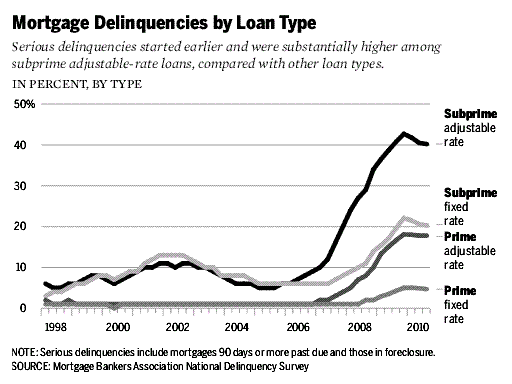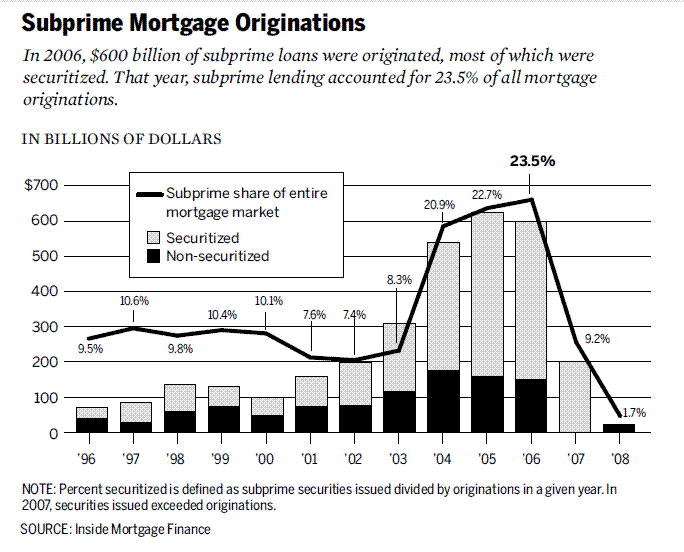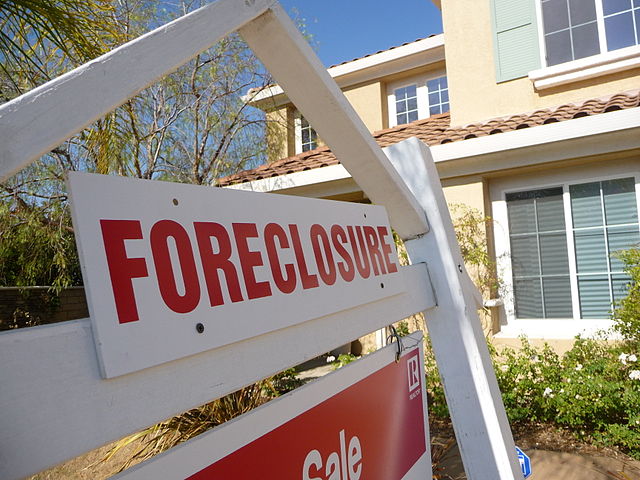Global Financial Crisis
This article will examine the global financial crisis that occurred beginning in 2008, and into 2009 and afterwards. In this article, we shall discuss the beginnings of the global financial crisis, the factors that led to the global financial crisis, the effects of the crisis, as well as the current state of the world given the 2008 financial crisis.
The Global Financial Crisis was one of the worst that the world has seen in decades. Economies across states were affected, and millions of jobs were lost. Moreover, it has taken years for the economy to rebound, and we are still not at levels prior to the global financial crisis. The question that many have posed is: what led to the 2008 financial crisis? As we shall see, there many factors that led to this global financial crisis. In this article, we shall discuss the role of banks, individuals, governments, and other key actors in the international system.
Deregulation of the International Markets
One of the primary causes of the recent 2008 financial crisis (and in turn the global financial crisis) was the deregulation of the financial markets in the United States and abroad. While the economic crisis occurred in 2008 and beyond, some argue that deregulation decades ago shaped the international market in a way that was less restricting on bank behavior. For example, in the mid 1970s until 1980, banks were a lot more freer to act, as regulations were taken off. Thus, “[f]or example, in 1980, commercial banks and savings and loans institutions were permitted to determine their own interest rates on deposits and loans, thereby spurring greater competition. Many smaller banks were acquired by larger, more distant banks” (Payne, 2013: 141). But along with deregulation of the domestic conditions facing banks in the United States, there were also pushes for international deregulations. Many banks were called for liberalization, arguing that they were lagging behind banks in other countries. Thus, some banks attempted to operate offshore in order to avoid restrictions (Payne, 2013). Moreover, increased technology, along with a belief in liberalization also helped move towards the idea of deregulation (Payne, 2013). And because of the deregulation, a number of companies were now more wiling to to take large risks, often away from the public idea. And a lot of this was because there were a lack of effective monitoring in place to hold such actors accountable (Payne, 2013). Moreover, it was at this time that we also saw the rise of hedge funds, which “[e]nabled wealthy investors to avoid some financial regulations in global financial markets” (Payne, 2013: 143).
Subprime Mortgage Crisis
Scholars argue that another key reason for the global financial crisis had to do with the subprime mortgage crisis and subprime loans. A subprime mortgage loan is where “credit is given to individuals who fail to meet rigorous standards usually expected by lending institutions” (Payne, 2013: 144). While “[t]he definition of what constitutes a “subprime” borrower is not precise, but it generally refers to a borrower with poor credit history (i.e. a FICO score below 620 or so) that pays a higher rate of interest on a loan” (Baily, Litan, & Johnson, 2008: 14) (there were also a category of borrowers under Alt-A, who were seen as “a bit less risky but not quite prime, [who] had better credit scores but little or no documentation of income” (Baily, Litan, & Johnson, 2008: 14)).
Many believe that the persons who were allowed to borrow money for homes did not have the necessary income, or sufficient credit scores to afford those homes. Moreover, banks were also very lenient on down payments; in many cases, 20 percent is often seen as safe, as it helps the banks ensure the owner is invested in the home, and in case they stop paying on the property, the bank will have some equity to take away from the transactions. However, in these cases, down payments were often not needed (Payne, 2013). And when this happens, particularly with loans that “had a very high loan to value ratio, perhaps as high as 100 percent…meaning that they started with no initial equity–and thus no true financial stake–in the house” (Baily, Liton, & Johnson, 2008: 17). And it has also been said that some bankers helped individuals by encouraging deceptive on loan applications, telling the person who is applying for the loan how to fill out parts of it (or what to purposely leave out). As Baily, Litan, & Johnson (2008) explain, “[s]ometimes the line will be fuzzy between a situation where broker helps a family navigate the application process so they can buy a house they really can afford, and a situation where the broker and the applicant are deliberately lying” (18).
Related to such issues of inability to actually afford the house that one was trying to purchase, there were various sorts of subprime mortgage loans such as adjustable rate mortgages (which had different interest rates over the years), balloon mortgages (where an individual would often pay a lower amount earlier, and then the payment would “balloon” after a certain number of years), as well as interest-only sorts of loans (Payne, 2013). With balloon payments, or example, there was a hope by those who entered into these agreements that they would have low rates for a set number of years, and then, when the payments increased at the agreed upon time, they would be able to pay them, and the house would be worth much more than it was worth when they made the initial purchase. Interestingly, the idea behind this was to eventually refinance as the house increased in value (Baily, Litan, & Johnson, 2008). However, when the time came for the increase in the payments, a number of individuals could not pay the new rate (Payne, 2013). And we also saw other non-traditional loans such as a piggyback loan, where a person who already purchased a home could get an additional loan on the existing home loan (Payne, 2013).
Baily, Litan & Johnson (2008) explain just how much of a rise we saw in subprime mortgages as it related to the factors of the 2008 financial crisis when they wrote:
Looking at the data, the deterioration in lending standards over the course of the boom is remarkable. The share of subprime loans originated as ARMs jumped from 51 to 81 percent from 1999 to 2006; for Alt-A loans, the share jumped from 6 to 70 percent during the same time period. A similar deterioration happened in combined loan to value ratios (the CLTV combines all liens against a property): the average CLTV ratio for originated subprime loans jumped from 79 to 86 percent. Furthermore, the share of full-doc subprime originations fell from 69 to 58 percent; for Alt-A loans it dropped from 38 to 16 percent” (18). (This data they used was from Ashcraft & Schuerman, 2008).
As the Economist (2013) explains the issue of these subprime mortgages with regards to the subprime mortgage crisis and the global financial crisis,
“The years before the crisis saw a flood of irresponsible mortgage lending in America. Loans were doled out to “subprime” borrowers with poor credit histories who struggled to repay them. These risky mortgages were passed on to financial engineers at the big banks, who turned them into supposedly low-risk securities by putting large numbers of them together in pools. Pooling works when the risks of each loan are uncorrelated. The big banks argued that the property markets in different American cities would rise and fall independently of one another. But this proved wrong. Starting in 2006, America suffered a nationwide house-price slump. The pooled mortgages were used to back securities known as collateralised debt obligations (CDOs), which were sliced into tranches by degree of exposure to default. Investors bought the safer tranches because they trusted the triple-A credit ratings assigned by agencies such as Moody’s and Standard & Poor’s. This was another mistake. The agencies were paid by, and so beholden to, the banks that created the CDOs. They were far too generous in their assessments of them.”
In fact, if one looks at the figures regarding lending in that time period (in the early 2000s), one saw that following 2003, the number of mortgages (and prime loan mortgages) actually fell in 2004-2006, but subprime loans rise drastically (Baily, Litan, & Johnson, 2008: 14).

Mortgage_delinquencies_by_loan_type_1998-2010, National Commission on the Causes of the Financial and Economic Crisis in the United States, public opinion
Banks, Profits, and the 2008 Financial Crisis
All of these loans had an effect on the overall stability of the housing market, and thus lead to the 2008 financial crisis. However, it wasn’t that investors saw these as concerning. In fact, many were willing to back such subprime loans, as they saw them as a way to make money. And banks were willing to continue to offer these subprime loans because they believed they also could make much more money than other places, with far lower interest rates (Economist, 2013).
Before the deregulation push, banks were the primary actors with regards to offering loans, and collecting on these loan payments. However, we began to see securitization. Payne (2013) explains that “Securitization is a sophisticated process of financial engineering that allows global investment to be spread out and separated into multiple income streams to reduce risk” (143). However, this action affected housing prices; “securitization increased the amount of money available to individuals purchasing homes. This led to unprecedented growth in house prices. It also resulted in high default rates and the housing crisis” (Payne, 2013: 143). As Baily, Litan, & Johnson (2008) argue,
“The most perverse incentive in the mortgage origination market…is the ability of originators to immediately sell a completed loan off their books to another financial institution. Currently, most mortgage loans are originated by specialists and brokers who do not provide the funding directly. One institution provides the initial funding of the mortgage but then quickly sells it off to another financial institution, where either it is held on a balance sheet or packaged with other mortgages to be securitized. The key issue here is that the institution that initiates the loan has little or no financial incentive to make sure the loan is a good one. Most brokers and specialists are paid based on the volume of loans they process. They have an incentive to keep the pace of borrowing rolling along, even if that meant making riskier and riskier loans” (20).

Subprime_mortgage_originations,_1996-2008, National Commission on the Causes of the Financial and Economic Crisis in the United States, public domain
Derivatives and the Global Financial Crisis
Another issue that further explains the 2008 financial crisis (and then global financial crisis) was the issue of derivatives. Derivatives are “…bets on the creditworthiness of a particular company, like insurance on a loan” (Payne, 2013: 143). Payne (2013) explains the role of derivatives with regards to the 2008 financial crisis when he explains that
There were two types of credit derivatives: credit default swaps and collateralized debt obligations. Credit default swaps were widely used, especially by insurance companies such as the American International Group (AIG). Life insurance companies invested in credit default swaps as assets. Parties involved in a credit default swap agreed that one would pay the other if a particular borrower, a third party, could not repay its loans. Credit default swaps were used to transfer credit risks away from banks. A major problem with credit default swaps was the lack of transparency. They were also unregulated. Ultimately, credit default swaps created confusion and encouraged excessive risk taking. It was difficult to determine where the risk ended up. Designed to pass on risks, loans were packaged as securities. Collateralized debt obligations are linked to mortgage companies, which passed on the risk, Mortgages, instead of being held by banks and mortgage companies, were sold to investors shortly after after the loans closed, and investors packaged them as securities” (143).
Speculation and the Global Financial Crisis
Throughout all of these issues with regards to the buildup to the 2008 financial crisis and the global financial crisis, there was a belief by many that housing prices would continue to rise. And because of this, what we saw was an increase in speculation, which “[i]nvolves excessive risk taking, excessive optimism, and the development of a herd mentality” (Payne, 2013: 146). In the case of the 2008 financial crisis, many continued to speculate on the prices of homes. They saw home sale prices rising, and in turn though out that this would continue. There were many factors that led to what many called a “speculative bubble.” Payne (2013) explains the four different steps to a speculative bubble:
- A new technology or invention changes people’s expectations and those who are well informed try to profit from it.
- Prices or profits continue to rise, which draws more people into the market.
- The boom passes into euphoria and rational decision making is suspended.
- The bust is almost inevitable. Prices and profits fall, companies and individuals go bankrupt, and the economy plunges into a recession” (146).
With regards to the economic crisis that occurred in 2008, one of the major issues was that people were doing just this; they were speculating on the housing market, thinking that prices would continue to increase. Some were looking at past trends, where, from the 1970s onward (until 2006), home prices rarely declined. Furthermore, increases were quite prevalent, with rises every single quarter from 1999 until just before the fourth quarter of 2007 (Baily, Litan, & Johnson: 2008). And looking toveall prices, “[r]ates of price increase moved above 6 percent in 1999, accelerating to 8 and then 9 percent before starting to slow at the end of 2005” (Baily, Litan, & Johnson, 2008: 11).
Seeing this data, many were onboard with speculating on the housing market. A number of individuals who were interviewed in 2003 supported the idea that real estate was the best possible investment for someone looking to invest in the long run (Case & Schiller, in Baily, Litan, & Johnson, 2008). This led to an increase in overall demand for homes (Baily, Litan, & Johnson, 2008). In fact, one of the reasons for the increase was this idea that since there was such a rise, that this would continue to take place, leading to higher prices (Baily, Litan, & Johnson, 2008).
Corporate Pay and Global Financial Crisis
One of the other reasons for the global financial crisis was said to be the pay levels of top individuals in various banks and related companies. There were incentives for those who could make money for the company, and the higher the stock went, the better the bonuses and pay was (Payne, 2013). Unfortunately, this lead to some individuals carrying out various fraud schemes in companies such as Enron, for example (Payne, 2013).
The Aftermath of the 2008 Financial Crisis
There were a number of effects to the 2008 Financial Crisis and in turn the global financial crisis. One of the biggest effects of the 2008 financial crisis within the United States was the housing crisis, with regards to foreclosures. With the collapse in housing prices, people owned much more on their mortgages than the home was worth. Looking at historical trends it seemed that “[o]ver the period 1995-2000, household income per capita rose substantially, contributing to the increased demand [of houses]. However, …the increase in house prices outpaced the growth of household income starting around 2000. One sign that house prices had moved too high is that they moved ahead much faster than real household income” (11).
In addition to the rise in prices compared to household income, many who got home mortgages were also unable to afford the mortgages, or the balloon payments (as discussed above). And others who were in the market to purchase a home had a tougher time doing so, whether because of credit, or the drops in value to their current homes. This affected construction of new homes, which in turn hurt industries reliant on the building of new homes. And thus, because of this, along with the overall decline in the economy, many individuals were losing jobs, which in turn further hurt their financial stability, and ability to pay the mortgages on their homes. When they were unable to do so, they foreclosed on their homes. It was said that “[o]ne in forty-five U.S. Households, or 3 million, received a foreclosure filing, and banks repossessed 1 million homes in 2010” (Payne, 2013: 147). Furthermore, the housing market did not improve in the years immediately after 2008 and 2009 (Payne, 2013).
The 2008 financial crisis had a detrimental effect on the U.S. economy. Along with the foreclosures, the subprime mortgage crisis and the overall economic crisis also hurt U.S. businesses. One of the hardest hit was the manufacturing industries, and in particular car companies. A number of companies such as General Motors, as well as Chrysler, went into bankruptcy. Overall industrial production was said to have an 11 percent decline in the United States (Payne, 2011: 148).

English: Treasury Secretary Henry Paulson, Federal Reserve Ben Bernanke, chairman of the SEC Christopher Cox, and James B. Lockhart III testifying on 2008-9-23 to Senate Banking Committee, 23 September 2008, public domain
The International Effects of the United States Financial Crisis
However, there was also a global financial crisis, where the U.S. economic crisis hurt companies trading abroad, as well as affected other countries and international businesses. For example, “[i]ndustrial production was down 12 percent in Europe…and 43 percent in Taiwan. Tightening credit and consumer fear ultimately created a downward spiral that significantly diminished global trade. Germany saw its exports drop by 20 percent [and] China’s exports fell by more than 25 percent” (Payne, 2013: 148). Furthermore, there has also been work discussing the 2008 Financial Crisis as it relates to states in the Global South (Naude, 2009).
References
Ashcraft, A.B. & Schuerman, T. (2008). Understanding the Securitization of Subprime Mortgage Credit. Staff Report no. 318, Federal Reserve Bank of New York. (March).
Baily, M.N., Litan, R.E. & M.S. Johnson (2008). The Origins of the Financial Crisis. Initiative on Business and Public Policy at Brookings. Fixing Finance Series, Paper 3, November 2008, pages 1-47.
Case, K.E. & Shiller, R.J. (2003). Is There a Bubble in the Housing Market? Brookings Papers on Economic Activity, 2, 2003, pages 299-342.
Economist (2013). The Origins of the Financial Crisis: Crash Course. September 7th, 2013. Available Online: http://www.economist.com/news/schoolsbrief/21584534-effects-financial-crisis-are-still-being-felt-five-years-article
Naude, W. (2009). The Financial Crisis of 2008 and the Developing Countries. United Nations University, Discussion Paper No. 2009/01, pages 1-20.
Payne, R. (2013). Global Issues. New York, New York. Pearson.




